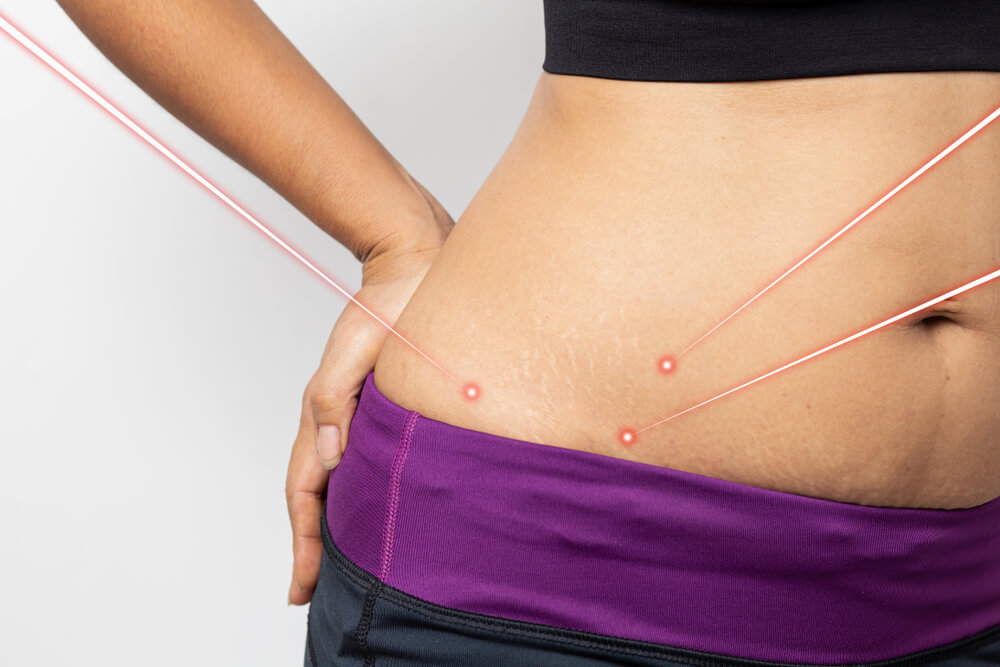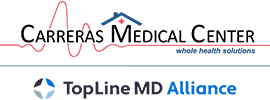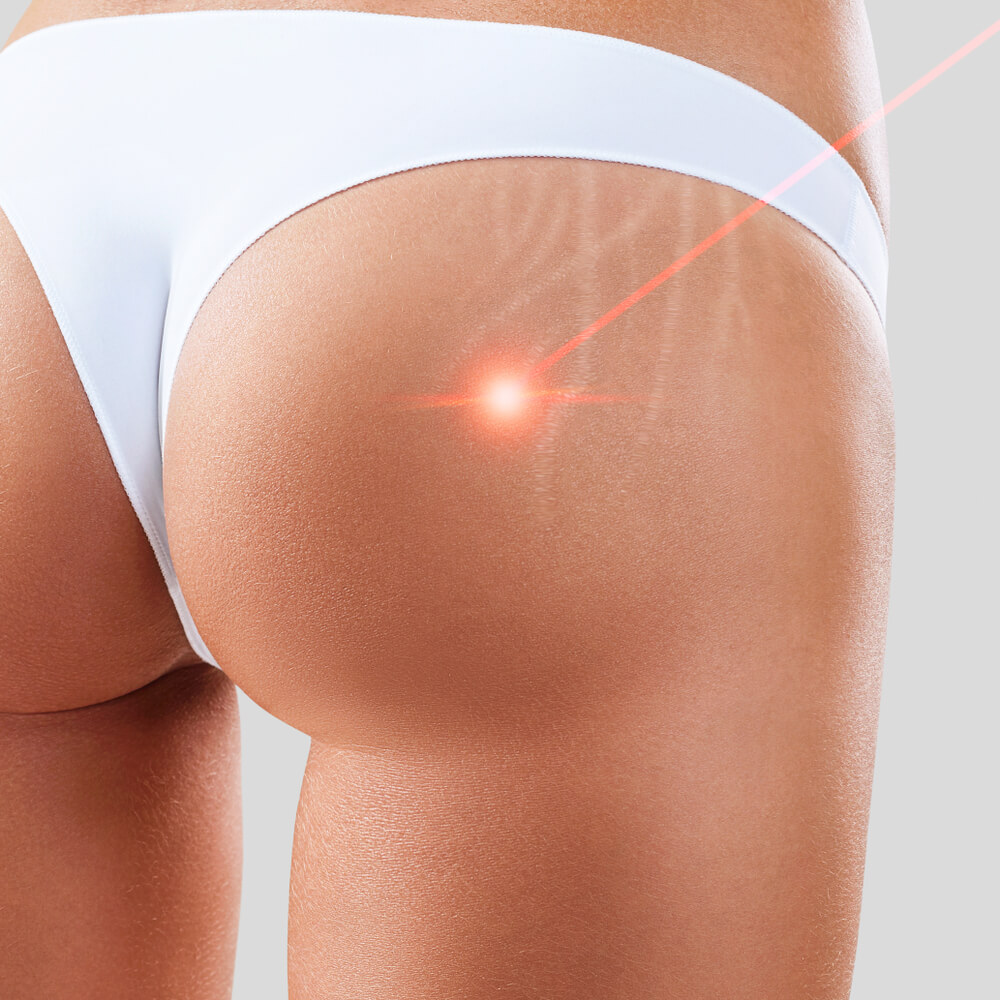Stretch marks are a natural occurrence, but many people are uncomfortable with their appearance. Yes, plenty of creams and treatments exist to reduce the appearance of stretch marks, but at best, they somewhat fade and at worst need frequent regular repeating. While stretch mark laser treatment cannot get rid of them 100%, it does reduce them enough to not be noticeable. Not many people are familiar with the technology, so here are some interesting facts you didn’t know about laser stretch mark removal.
Stretch Marks Are Deep Scars
We commonly think of stretch marks (striae) as being the marks that appear whenever there’s a lot of sudden growth or weight change. While it’s accurate, the exact way stretch marks develop is a little more complicated than that. Such familiarity will help you understand how surgery for stretch marks works.
The reality of stretch marks is that puberty, growth spurts, pregnancy, weight gain, weight loss, greater muscle mass, or using corticosteroids can all create them. While the skin stretches, the collagen bundles underneath tear away from each other, changing the collagen structure to make room. There is a deep tearing underneath the skin that occurs, so when the rapid growth stops, the skin looks lined and wrinkled. The stretch marks may appear raised or indented. Some are red or purple, while others appear lighter than the surrounding skin. The skin in that area is thinner and more translucent when it finishes forming, while underneath is what is a deep scar. Hence, if you wondered whether the treatment for stretch marks is similar to that of scars, you would be right.
Stretch Marks Can Make Their Appearance Anywhere
Stretch marks frequently appear in the areas where sudden growth periods happen. Otherwise, they appear in high-stress areas. The typical areas are the thighs, legs, lower abdomen, upper arms, and breasts. They may or may not appear in conjunction with sagging or loose skin. While some are more visible than others, many people feel stretch marks are unsightly regardless of where they are.
Stretch Mark Remedies Don’t Deliver

You can make stretch marks less noticeable by creating an everyday skincare regimen. Exfoliation, collagen treatment, and vitamin-enriched moisturizers are all important parts of any skincare routine. Self-tanning is an optional practice that minimizes the appearance of stretch marks by gradually darkening the skin into a subtle tan.
You can also eat certain foods to reduce the appearance of the marks. Ginseng, produced with vitamin C, or foods with antioxidants or hyaluronic acid all contribute to skin elasticity. Alternately, the same substances are available in supplements.
Exercise can tone the skin as well, reducing the unevenness of stretch marks. Yoga, swimming, and walking all help as do squats, leg lifts, or other exercises specific to the part of the body experiencing stretch marks.
The problem with all of this is that many people do not have the time or energy to suddenly engage in long-term daily skincare, new foods or supplements, or exercise specifically for treating stretch marks. Even more important is the fact that many at-home or advertised treatments don’t deliver on their promises of results and work on only the uppermost layers of the skin. Besides, dermatologists tell patients to stop using skin care products containing a retinoid or glycolic acid for two to four weeks before treatment.
However, there is a modern in-office treatment that works and whose results have been quantifiably measured. Laser surgery for stretch marks is the latest breakthrough procedure for consistently and dramatically minimizing stretch marks over the long term.
Stretch Mark Laser Surgery Isn’t Technically a Surgery
In the past, surgery for stretch marks involved abdominoplasty (tummy tuck) or microdermabrasion. People could alternately pursue over-the-counter stretch mark removal products. Later on, there was micro-needling, and for tucks and lifts, excisional surgery. Tummy tucks and other excisional surgeries have a lengthy recovery period, and micro-needling takes at least four months for results.
Now, laser surgery for stretch marks replaces all that, except for excess skin removal. During the treatment, your skin is numbed so you won’t feel anything. The fractional laser delivers pulses of energy deep into your skin, which fools your skin cells into responding like they’re injured. This, in turn, triggers your skin cells into creating new collagen in the area, filling up the uneven surface.
Although the laser doesn’t eliminate the stretch marks completely, it promotes a lot of new tissue growth, resulting in a natural look. The growth pattern interrupts the stretch marks to create a smooth surface. There are not only new tissue layers but also new collagen, the protein that gives skin its elasticity and firmness.
Surgeons use two different kinds of lasers for skin resurfacing treatments: non-ablative and ablative. Ablative lasers destroy the topcoat of skin to regenerate it. In other words, they resurface deeply damaged skin. For that reason, they result in longer recovery time with the formation of small burns and scabs.
Non-ablative lasers destroy the deeper layers of skin so that collagen grows from the inside out. Redness and swelling after the procedure are common. Since patients tolerate them better than the ablative lasers, they are a more popular choice. Results for either laser are the same, but the one that will give you the best results on your particular stretch marks depends on their severity and your skin type.
The time you spend in treatment using either type of laser is fairly quick. Ablative lasers are normally an hour and a half, and non-ablative treatments take only a half-hour.
Laser Stretch Mark Surgery Is an Investment

The national average cost of laser skin resurfacing treatment is $2,681 per the 2016 Cosmetic Surgery National Data Bank Statistics by the American Society for Aesthetic Plastic Surgery (ASAPS). The American Board of Cosmetic Surgery (ABCS) gives a wide cost range of $500 to $8,900. As for non-ablative laser treatments, their average cost is $1,410 each according to the ASAPS.
The cost for laser stretch mark removal depends on how many sessions you need. What it ultimately does is decrease the depth of the stretch marks. However, you can achieve results after several sessions, so it is important to commit to following through with the full treatment. It is a worthy investment for the dramatic and long-term results this procedure has proven to accomplish.
You Can Get the Best Laser Stretch Mark Surgery in Hialeah
If you are looking for exceptional laser stretch mark removal in Hialeah, you’re in luck with the Carreras Medical Center. We invite you to see for yourself if laser surgery for stretch marks is right for you.
Serving the Hialeah community, Ivan Carreras and his medical team provide care for patients at all stages of their lives. We also specialize in women’s health and skin restoration, so you can rest assured you’re in excellent care for feeling and looking your best. Call to make an appointment today.


